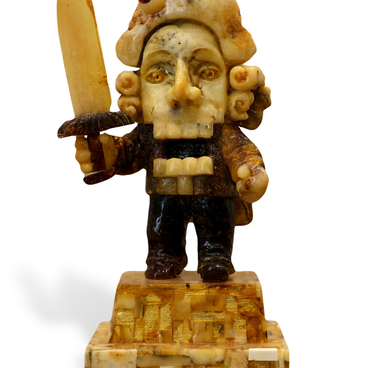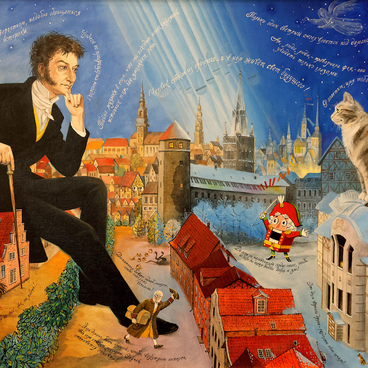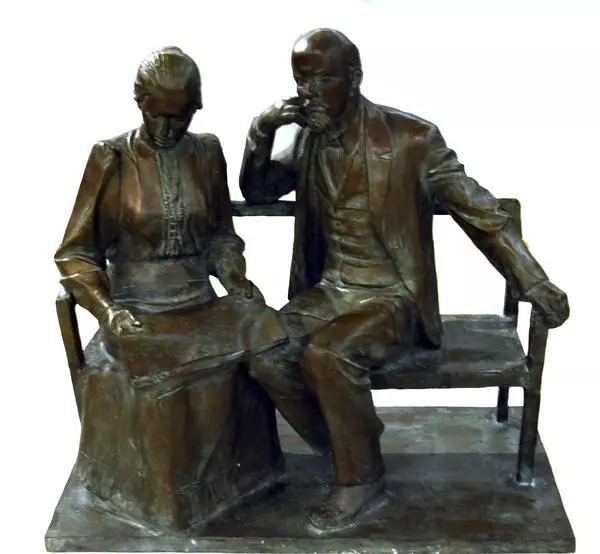The exhibit is a sculptural portrait of Albrecht Dürer (1471–1528), the greatest European master of woodcuts, German painter, draftsman and engraver, master of Western European Renaissance art. As a Renaissance man, he did not limit himself to the field of art, but was also a scientist and theorist.
Dürer was engaged in mathematics, cartography and fortification, and wrote the treatises “Manual of Measurement with Compass and Ruler” and “Four Books on Proportions”. Engravings and drawings by Albrecht Dürer are notable for their fine line details. One of such works was the drawing “Hare”, which the artist executed in 1502.
The sculpture of the German painter and graphic artist was made by Oleg Konstantinovich Komov (1932–1994), a Soviet and Russian sculptor and graphic artist, winner of the USSR State Prize (1981). He created this work in 1987, the same year he was awarded the title of People’s Artist of the USSR.
Oleg Komov’s works are characterized by their minimalistic forms, small size, correct proportions for the viewer and for the historical architectural environment. The figures of his monuments are usually supplemented with distinctive historical details or objects. Komov is the designer of the monument to Yaroslav the Wise in Yaroslavl, depicted on a 1000-ruble banknote.
The Russian sculptor portrayed the German artist immersed in the creative process. Dürer is positioned half sideways to the viewer, he is dressed in a loose Reformation era costume with a beret on his head. The artist’s long wavy hair falls to his shoulders. There is a large hourglass in a triangular case to his right. It is a reminder of the transience of the time allotted for creative work. Dürer holds a board on his lap with his left hand and a stylus in his right hand. Oleg Komov cast this sculptural portrait in bronze.
In April 1993, Inna
Ivanovna Mironchuk, head of the museum’s exhibition “Sculpture Park”, selected
the work “Dürer. The Artist and Time” to extend the museum’s collection. As a
result, the sculpture of Dürer went from Moscow not to the park, but directly
to the halls of the museum.




